As a mac and cheese lover, it’s important to know how long this delicious dish can last in the fridge.
While it’s tempting to make a large batch and eat it for days, it’s essential to understand how long mac and cheese can be stored in the fridge before it goes bad.
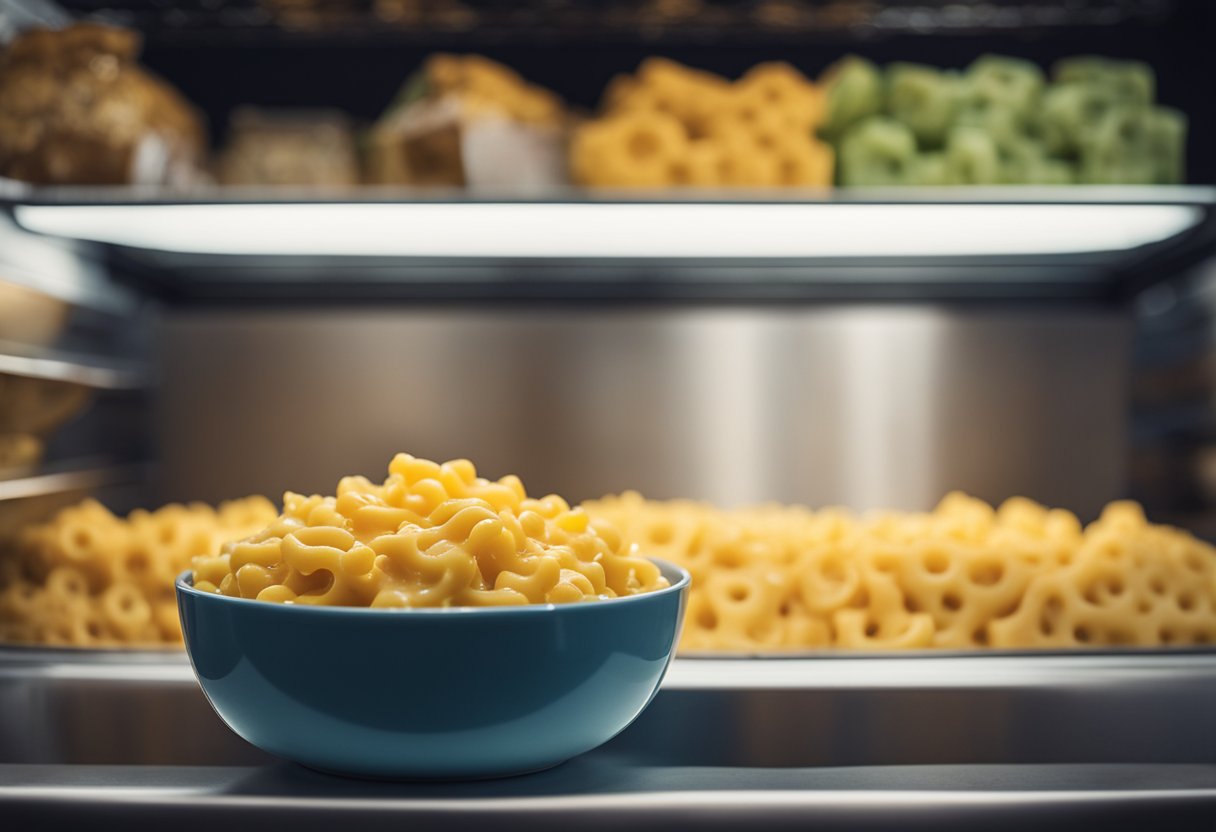
Mac and cheese is a classic comfort food that can be made in various ways, from homemade to store-bought.
Understanding the shelf life of mac and cheese is crucial to prevent foodborne illnesses and ensure that the dish remains fresh and tasty.
Key Takeaways
- Mac and cheese can last in the fridge for 3-5 days when stored properly.
- Spoilage in mac and cheese can be recognized by changes in texture, smell, and taste.
- Freezing mac and cheese can extend its shelf life, but reheating it requires proper temperature and time management.
Understanding Mac and Cheese
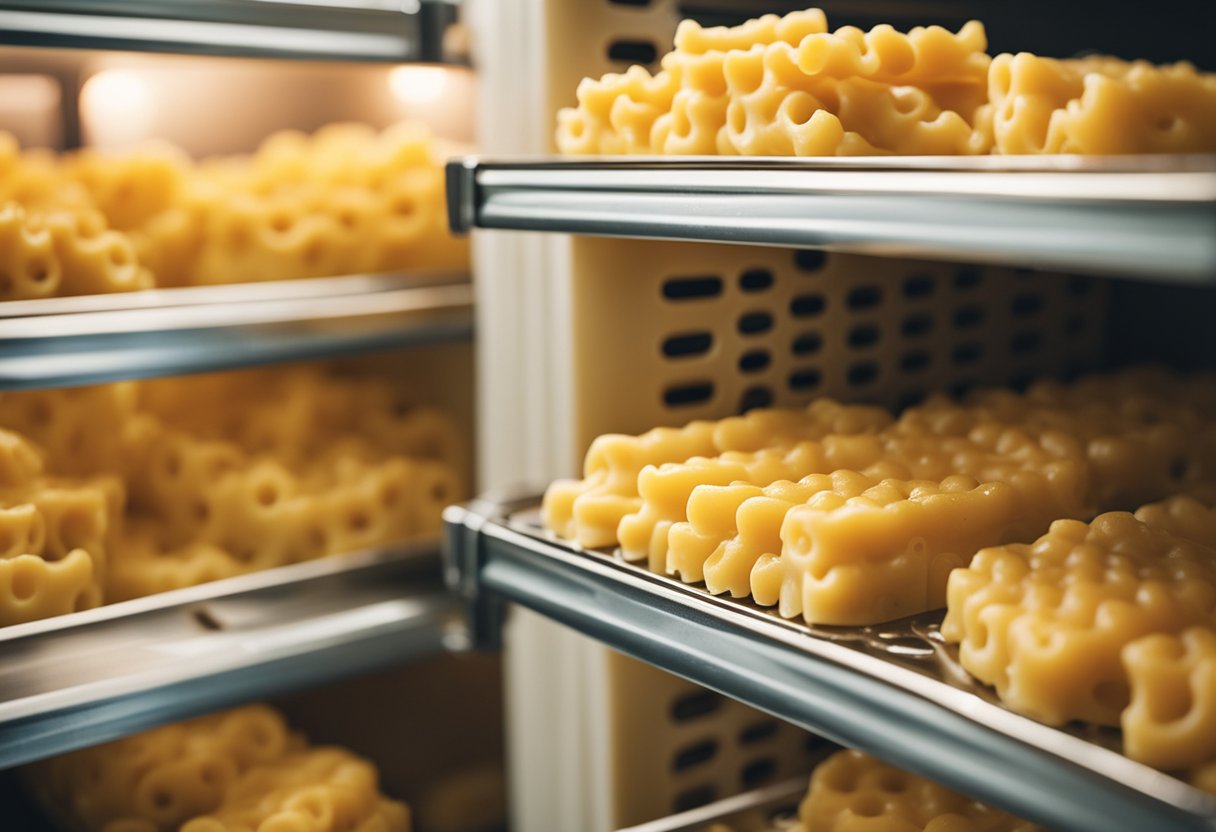
As a classic American dish, mac and cheese is a go-to comfort food for many people. This dish is typically made with pasta, cheese, milk, and butter, but there are many variations to the recipe.
Mac and cheese can be baked or made on the stovetop, and different types of cheeses can be used to create unique flavors.
When it comes to making homemade mac and cheese, there are a few key ingredients that are essential.
Pasta is the base of the dish, and there are many different types of pasta that can be used. Elbow macaroni is the most common choice, but other shapes like shells, fusilli, or penne can also work well.
The cheese is another important component of mac and cheese. Cheddar cheese is the most popular choice, but other types of cheese like Gouda, Fontina, or Parmesan can be used as well.
Some recipes call for a blend of different cheeses to create a more complex flavor.
To make the sauce for mac and cheese, milk and butter are typically used. The milk helps to create a creamy texture, while the butter adds richness and flavor.
Other ingredients like flour or cornstarch can be used to thicken the sauce.
Boxed mac and cheese, like Kraft Mac and Cheese, is a popular choice for a quick and easy meal. These products typically come with pre-made cheese sauce packets that can be mixed in with the cooked pasta.
While boxed mac and cheese may not be as flavorful as homemade versions, they are a convenient option for busy weeknights.
When it comes to storage, cooked mac and cheese can last in the fridge for around three to five days when kept properly in an airtight container.
Baked mac and cheese has a shorter lifespan and will only last for a mere 2-3 days in the fridge. It is important to store mac and cheese within two hours of cooking to prevent bacteria growth.
Storing Mac and Cheese in the Fridge
When it comes to storing mac and cheese in the fridge, it’s important to know how long it can last and how to store it properly.
The shelf life of cooked mac and cheese in the fridge is typically around 3 to 5 days, depending on various factors such as the ingredients used and the storage method.
To ensure that your mac and cheese stays fresh as long as possible, it’s recommended to store it in an airtight container.
This will help prevent any air from getting in and causing the food to spoil faster. You can also cover the container with plastic wrap or aluminum foil for added protection.
When storing mac and cheese in the fridge, it’s important to let it cool down to room temperature before placing it in the refrigerator.
Placing hot food in the fridge can cause the temperature to rise, which can lead to bacteria growth and spoilage. It’s best to wait until the mac and cheese has cooled down before storing it in the fridge.
If you have leftovers that you want to store in the fridge, it’s important to transfer them to an airtight container as soon as possible.
Leaving the food in the original container or leaving it uncovered can cause it to dry out and spoil faster.
It’s also important to label the container with the date that the mac and cheese was cooked or stored, so that you can keep track of how long it’s been in the fridge.
Overall, storing mac and cheese in the fridge is a simple process that requires a few key steps to ensure freshness and longevity.
By using an airtight container, letting the food cool down before storing it, and labeling the container with the date, you can help extend the shelf life of your mac and cheese in the fridge.
Recognizing Spoilage in Mac and Cheese

As with any food, it is important to recognize when mac and cheese has spoiled.
Spoilage can occur due to a variety of factors, including mold growth, bacterial contamination, and exposure to air and moisture. Here are some signs to look out for:
- Mold growth: If you see any mold growing on the surface of your mac and cheese, it is best to discard it immediately. Mold can produce toxins that can be harmful if ingested, and it can spread quickly throughout the food.
- Slimy texture: If your mac and cheese has a slimy texture, it may be a sign of bacterial growth. Bacteria can thrive in moist environments, and if your mac and cheese has been exposed to air or moisture, it may have become contaminated.
- Off odor: If your mac and cheese has an off odor, it may be a sign that it has spoiled. A sour or rancid smell can indicate bacterial growth, while a moldy or musty odor can indicate mold growth.
It is important to note that some changes in texture and flavor are normal as mac and cheese ages. However, if you notice any of the above signs, it is best to err on the side of caution and discard the food.
To prevent spoilage, it is important to store your mac and cheese properly. Make sure to keep it in an airtight container in the refrigerator, and consume it within three to five days.
If you have leftover mac and cheese that you do not plan to eat within this timeframe, consider freezing it for later use. Frozen mac and cheese can last for up to three months if stored properly.
In summary, recognizing spoilage in mac and cheese is important to ensure that you are consuming safe and healthy food.
Look out for signs of mold growth, slimy texture, and off odor, and make sure to store your mac and cheese properly to prevent spoilage.
Effects of Temperature on Mac and Cheese
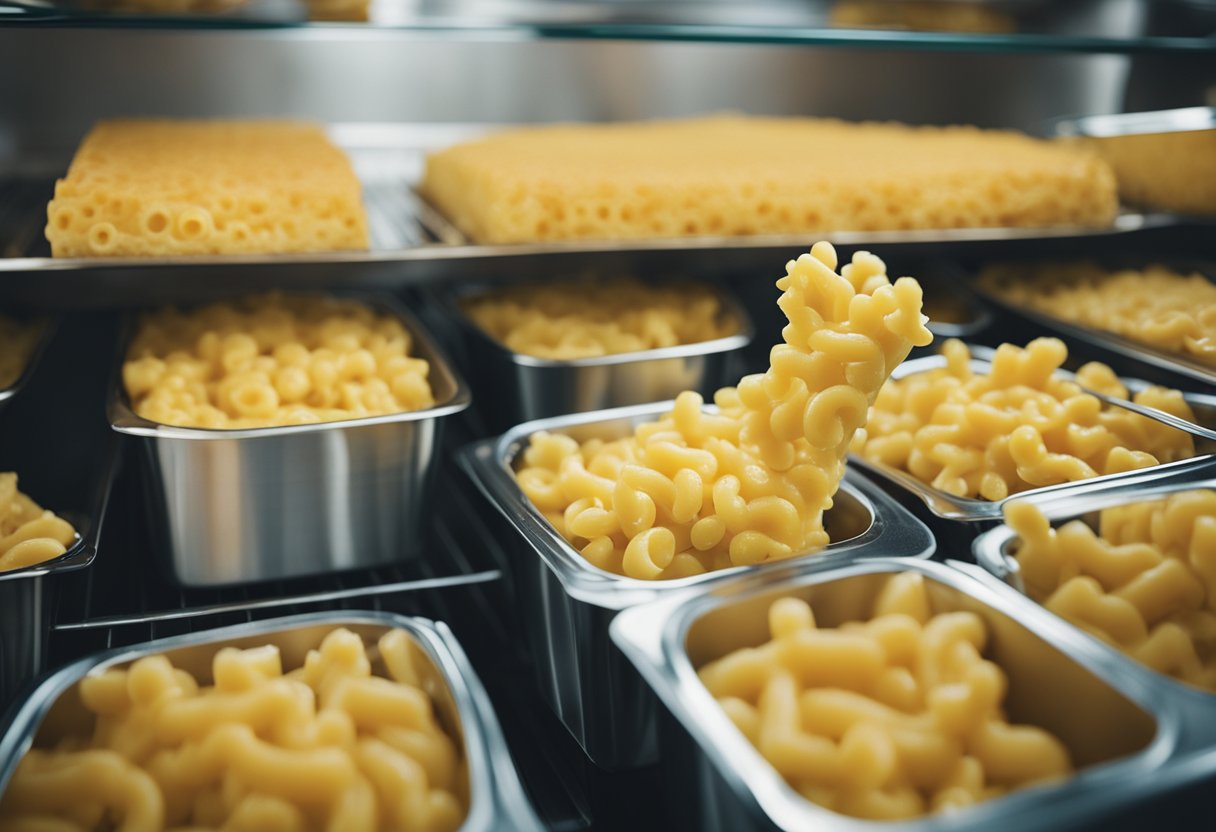
As a food, mac and cheese is prone to bacterial growth when left at room temperature for too long.
According to Foods Guy, if mac and cheese is left out at room temperature for more than two hours, bacterial growth will increase, and there is a chance that you could fall ill from food poisoning if you then eat the mac and cheese.
Bacteria can multiply rapidly between temperatures of 40°F – 140°F, which is known as the “Danger Zone.”
At these temperatures, harmful bacteria can grow quickly, which can cause foodborne illnesses. Therefore, it is essential to store mac and cheese at the correct temperature to prevent bacterial growth.
When storing mac and cheese in the fridge, it should be kept at a temperature of 40°F or below to slow down bacterial growth.
Cooked mac and cheese that has been refrigerated in an airtight container can last for three to five days, according to Tips Bulletin.
However, it is important to note that the longer mac and cheese sits in the fridge, the more likely it is to develop harmful bacteria.
It is also worth noting that the temperature of your fridge can affect the shelf life of mac and cheese. If your fridge is not cold enough and the temperature rises above 40°F, bacteria can grow, and the mac and cheese can spoil faster.
Therefore, it is important to keep your fridge at the correct temperature to ensure that your food stays fresh for longer.
In summary, the temperature at which mac and cheese is stored can significantly affect its shelf life.
To prevent bacterial growth, it is essential to store mac and cheese at the correct temperature and to eat it within a few days of refrigeration.
Freezing Mac and Cheese
As a lover of mac and cheese, I often make more than I can eat in one sitting. Freezing mac and cheese is an excellent way to save leftovers for later.
However, it’s essential to freeze it correctly to maintain its quality and prevent foodborne illnesses.
To freeze mac and cheese, let it cool down to room temperature before transferring it to an airtight container or a freezer bag.
Make sure to remove as much air as possible from the container or bag before sealing it. Label the container or bag with the date and contents and place it in the freezer.
Frozen mac and cheese can last for up to six months in the freezer. However, it’s best to consume it within two to three months for optimal quality.
When it’s time to enjoy your frozen mac and cheese, remove it from the freezer and let it thaw in the refrigerator overnight.
Avoid thawing frozen mac and cheese at room temperature or in warm water, as it can promote bacterial growth and lead to foodborne illness.
Once thawed, reheat the mac and cheese in the oven or microwave until it’s heated through.
It’s worth noting that the texture of frozen mac and cheese may change slightly after thawing and reheating.
The cheese sauce may become slightly grainy and separate from the pasta. However, this is normal and doesn’t affect the taste or safety of the dish.
In summary, freezing mac and cheese is an excellent way to save leftovers for later. To ensure its quality and safety, freeze it correctly, and consume it within two to three months.
Thaw frozen mac and cheese in the refrigerator overnight and reheat it in the oven or microwave until it’s heated through.
Reheating Mac and Cheese

When it comes to reheating mac and cheese, there are several ways to do it. Some methods are better than others, depending on your preferences and the equipment you have available.
One of the easiest ways to reheat mac and cheese is in the microwave.
Simply place your mac and cheese in a microwave-safe dish, cover it with a lid or plastic wrap, and microwave it on high for 1-2 minutes, stirring occasionally.
If your mac and cheese is starting to dry out, you can add a splash of milk or cream to help it stay creamy.
Another way to reheat mac and cheese is in the oven. Preheat your oven to 350°F (175°C) and place your mac and cheese in a baking dish.
Cover the dish with foil and bake for about 20-25 minutes, or until the mac and cheese is heated through. If you want a crispy top, you can remove the foil and bake for an additional 5-10 minutes.
If you’re short on time, you can also reheat mac and cheese on the stovetop. Place your mac and cheese in a nonstick pan over medium heat, and add a splash of milk or cream.
Stir frequently until the mac and cheese is heated through and creamy.
No matter which method you choose, it’s important to make sure your mac and cheese is heated to an internal temperature of at least 165°F (74°C) to ensure it’s safe to eat.
Also, keep in mind that reheating mac and cheese too many times can cause it to dry out and lose its flavor, so try to only reheat what you plan to eat.
Ensuring Food Safety
As someone who loves mac and cheese, I always make sure to follow proper food safety guidelines to avoid any risk of food poisoning or illness.
Mac and cheese is a perishable food, so it is important to store it correctly and consume it within the recommended time frame.
When preparing mac and cheese, it is important to use safe cooking practices to ensure that the dish is cooked thoroughly.
This will help to kill any harmful bacteria that may be present in the food. Additionally, it is important to use fresh ingredients and to avoid using any ingredients that may be expired or spoiled.
After cooking, it is important to store mac and cheese in the refrigerator promptly.
Cooked mac and cheese can stay in the refrigerator for anywhere from 3-5 days, depending on various factors such as the type of mac and cheese, storage conditions, and packaging.
Proper storage is key to maintaining the quality and safety of the food.
To ensure that mac and cheese stays fresh and safe to eat, it is important to store it in an airtight container in the refrigerator.
This will help to prevent any bacteria or other contaminants from getting into the food. It is also important to avoid storing mac and cheese in the door of the refrigerator, as this area is subject to temperature fluctuations.
In summary, ensuring food safety when it comes to mac and cheese involves safe cooking practices, using fresh ingredients, and proper storage.
By following these guidelines, you can enjoy delicious and safe mac and cheese without any risk of food poisoning or illness.
Additional Mac and Cheese Variations

As a mac and cheese enthusiast, I am always looking for new and exciting variations of this classic dish. Here are a few variations that I have tried and enjoyed:
Broccoli Mac and Cheese
Adding broccoli to mac and cheese is a great way to add some extra nutrients to the dish. Simply steam or roast some broccoli and mix it in with your mac and cheese.
You can also add some garlic and red pepper flakes for extra flavor.
Cauliflower Mac and Cheese
If you’re looking for a low-carb alternative to traditional mac and cheese, try using cauliflower instead of pasta.
Simply steam or roast some cauliflower and mix it in with your cheese sauce. You can also add some bacon bits or green onions for extra flavor.
Meaty Mac and Cheese
For a heartier version of mac and cheese, try adding some cooked meat to the dish. Ground beef, sausage, or bacon all work well in mac and cheese.
You can also add some diced tomatoes or green chilies for a Mexican twist.
Vegan Mac and Cheese
If you’re following a vegan diet, you can still enjoy mac and cheese by using dairy-free cheese and milk alternatives.
Nutritional yeast is a great way to add some cheesy flavor to your vegan mac and cheese. You can also add some roasted red peppers or sun-dried tomatoes for extra flavor.
Mac and Cheese Lasagna
For a fun twist on traditional lasagna, try using mac and cheese instead of pasta. Simply layer cooked mac and cheese with your favorite meat sauce and bake in the oven.
You can also add some spinach or mushrooms for extra flavor and nutrition.
Overall, there are many ways to enjoy mac and cheese beyond the classic version.
Whether you’re looking to add some extra veggies or meat, or trying to accommodate a specific dietary restriction, there’s a mac and cheese variation out there for everyone.
Mac and Cheese in Different Contexts
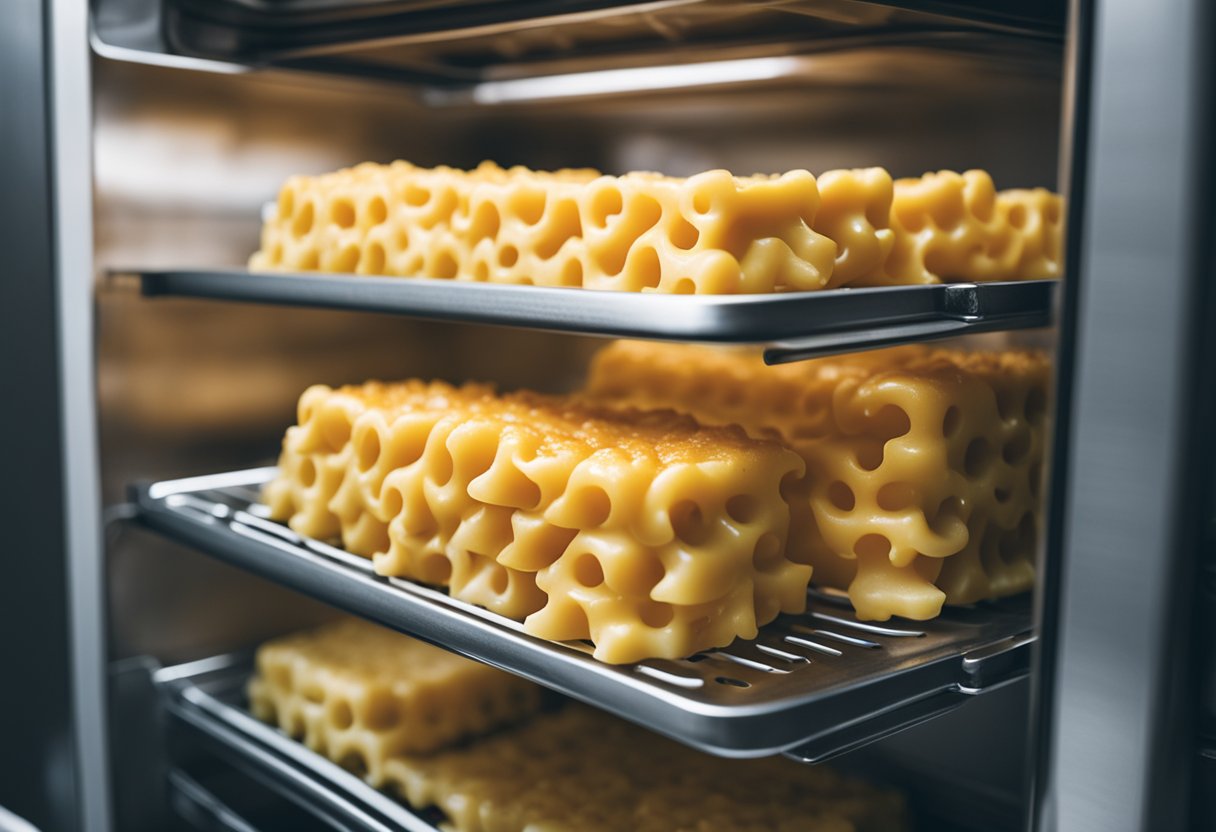
As a popular side dish in the United States, mac and cheese is a staple at many parties and gatherings.
It is a versatile dish that can be served hot or cold, and it can be made in a variety of ways to suit different tastes.
When it comes to serving mac and cheese as a main course, it can be a filling and satisfying meal for those on a budget. It is a cheap and easy dish to make, and it can be customized with different types of cheese and seasonings to add variety.
As a side dish, mac and cheese pairs well with a variety of main dishes, such as grilled chicken or steak. It is a comforting and familiar dish that is sure to please even picky eaters.
When it comes to storing mac and cheese in the fridge, it is important to keep it properly refrigerated in an airtight container.
According to StillTasty.com, cooked mac and cheese will last for 3 to 5 days in the refrigerator. To extend its shelf life, it is possible to freeze mac and cheese in covered airtight containers or heavy-duty freezer bags.
Cooked mac and cheese dishes containing sauce freeze best, while cooked macaroni noodles frozen without sauce may become dry and lose their flavor.
Overall, mac and cheese is a versatile dish that can be enjoyed in many different contexts. Whether served as a main course or a side dish, it is a comforting and satisfying meal that is sure to please.
When stored properly, it can be enjoyed for several days and even frozen for later use.
Preserving the Quality of Mac and Cheese
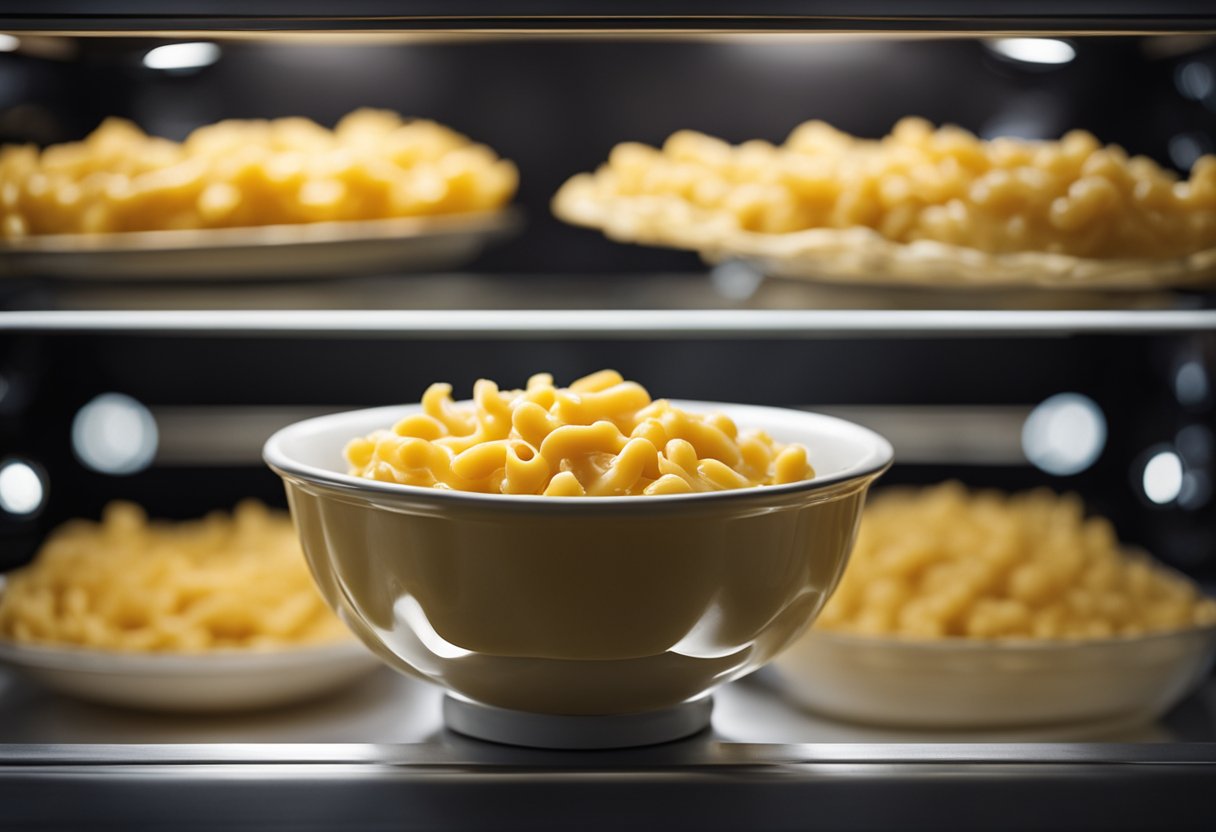
As someone who enjoys a good bowl of mac and cheese, I know how important it is to preserve its delicious taste and texture.
Here are some tips to help you keep your mac and cheese fresh and tasty for longer:
Storage Conditions
Proper storage plays a vital role in preserving the quality and flavor of mac and cheese. Storing it in a cool, dry place, away from direct sunlight and heat, can help prolong its shelf life.
When storing mac and cheese in the fridge, make sure to put it in the far corner of the fridge where it’s coldest. This will help prevent it from getting mushy or spoiling quickly.
Cooked vs. Dry Mix
When it comes to cooked mac and cheese, it’s best to consume it within 3-4 days of cooking. If you have leftovers, make sure to store them in an airtight container in the fridge.
If you’re planning to freeze it, make sure to do so within 2 hours of cooking to prevent bacterial growth. Frozen cooked mac and cheese can last up to 2 months in the freezer.
On the other hand, when it comes to dry mix of mac and cheese, as long as moisture didn’t get into the package, it can last for up to 3 months past its best-by date.
However, it’s always best to check for any signs of spoilage before consuming it.
Signs of Spoilage
There are a few signs you should look out for to determine if your mac and cheese has gone bad. If it has a sour or unpleasant odor, it’s likely spoiled and should not be eaten.
If you see any mold growing on your mac and cheese, it’s definitely time to throw it out. Mold can be harmful if ingested.
Additionally, if the texture of your mac and cheese has become mushy or slimy, it’s best to discard it.
By following these tips, you can help preserve the quality and flavor of your mac and cheese for longer.
Also, check out some similar posts:
Frequently Asked Questions
How long is mac and cheese good for after expiration date?
Mac and cheese should not be consumed after the expiration date. It is recommended to always check the expiration date before consuming any food.
Consuming expired mac and cheese can cause food poisoning and other health issues.
How long can you keep mac and cheese in fridge before baking?
When properly refrigerated in an airtight container, mac and cheese stays fresh for three to five days.
If you want to keep it longer, you can freeze your mac and cheese. Just make sure it’s tightly sealed to guard against freezer burn.
Can I eat week old mac and cheese?
It is not recommended to eat week old mac and cheese. Consuming old mac and cheese can cause food poisoning and other health issues.
It is recommended to consume mac and cheese within three to five days of refrigeration.
How long does Mac and cheese take to bake?
The baking time for mac and cheese varies based on the recipe and oven temperature. Generally, it takes about 30 to 40 minutes to bake mac and cheese.
How long does Kraft mac and cheese last in fridge?
When properly refrigerated in an airtight container, Kraft mac and cheese stays fresh for three to five days.
How long does Annie’s mac and cheese last in the fridge?
When properly refrigerated in an airtight container, Annie’s mac and cheese stays fresh for three to five days.







